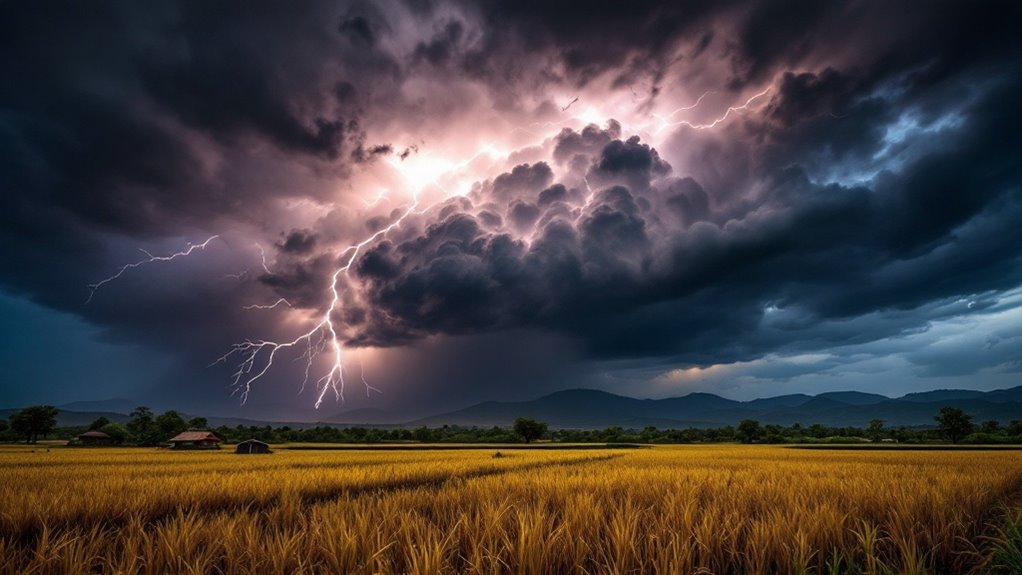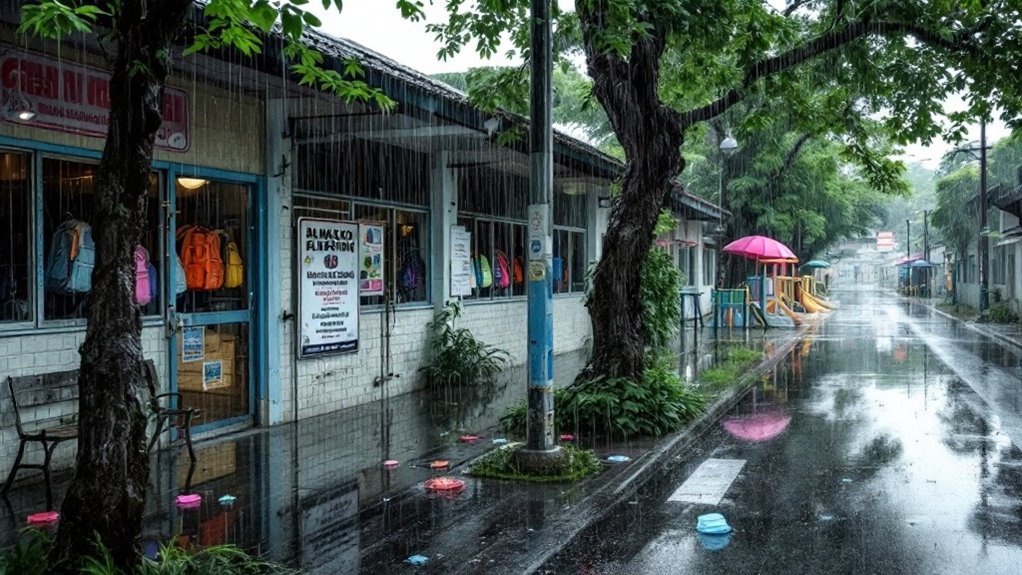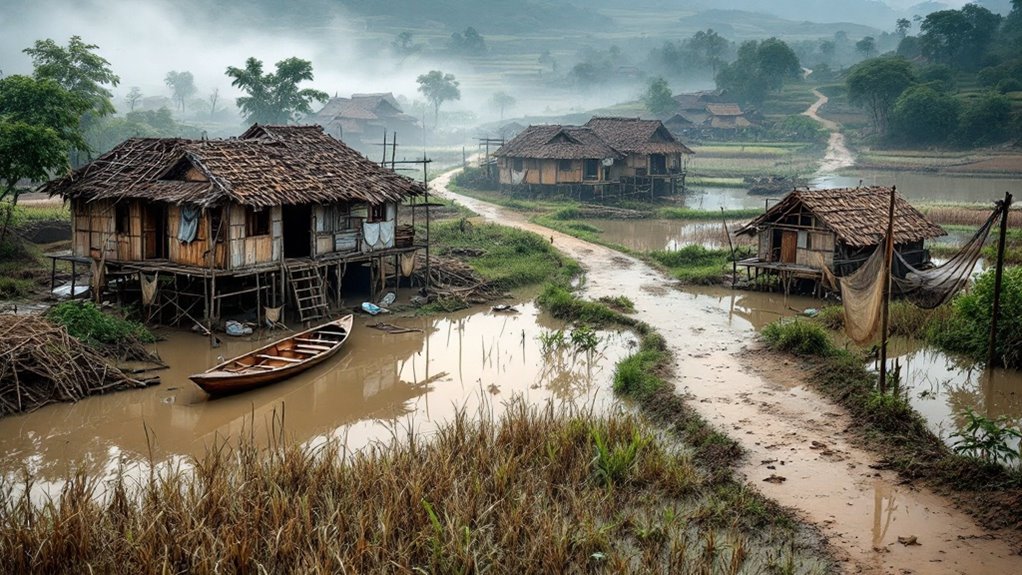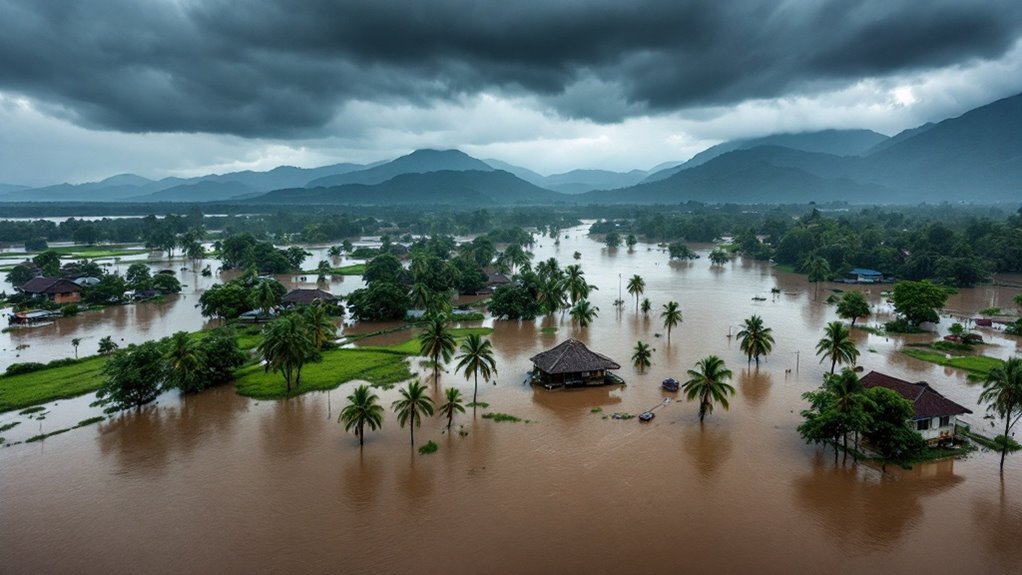Northeast Thailand currently faces intense summer storm threats due to the seasonal influence of strong high-pressure systems from China, persistent hot air masses, and the convergence of southeasterly and southwesterly winds. These factors combine to create highly unstable atmospheric conditions, resulting in severe thunderstorms, strong winds, and frequent hail, particularly during the region’s hottest periods. Agricultural damage and hazards for travelers are common outcomes, with local authorities maintaining heightened preparedness. Additional details explain how these phenomena impact daily life and regional resilience.
Each year, the Northeast region of Thailand faces a heightened risk of summer storms, characterized by intense thunderstorms, strong winds, and hail. These severe weather events typically peak during the hottest months and are especially prevalent during long weekends, when travel increases. The storms are not isolated to the Northeast, as upper Thailand—including the North and Central regions—also experiences these disruptions. Persistently high temperatures over upper Thailand create favorable conditions for the development of summer storms, while wind patterns further intensify their impact.
A key driver of these seasonal storms is the influence of a moderate to rather strong high-pressure system originating from China. This system brings southeasterly and southwesterly winds across the North and Northeast, while hot air masses linger over the region. The interaction between these different airflows, particularly those coming from China and Myanmar, sets the stage for rapid storm development. Thunderstorms and gusty winds expected in 60% of the area increase the urgency for precautions in the affected provinces. During the summer, the convergence of these systems is more frequent, explaining the increased storm activity observed during this period.
The effects of these storms are widespread and multifaceted. Farmers in the Northeast are routinely advised to secure fruit trees and protect their crops, as strong winds and hail can cause significant agricultural damage. Travelers face increased risks, with authorities advising avoidance of routes prone to flooding or areas known for storm activity. Residents are urged to avoid open spaces, large trees, and poorly built structures during storm events to reduce injury risk. Local weather updates are recommended for those living in at-risk areas, as staying informed can help residents implement timely safety measures.
Summer storms threaten crops, disrupt travel, and endanger residents, underscoring the need for proactive safety measures across Thailand’s Northeast.
Rapid shifts in weather can also lead to health problems, necessitating precautions among vulnerable populations. Geographically, the Northeast’s landscape, with its low-lying areas and limited drainage infrastructure, heightens susceptibility to short-term flooding and cumulative storm-related damage. The region’s reliance on agriculture amplifies economic losses when storms strike.
Community resilience and preparedness are critical, with local and national authorities issuing meteorological alerts, providing safety guidelines, and encouraging collective action to mitigate impacts. As climate patterns persist, the frequency and intensity of summer storms in Thailand’s Northeast remain a pressing concern, requiring ongoing vigilance and adaptation by both individuals and communities.









